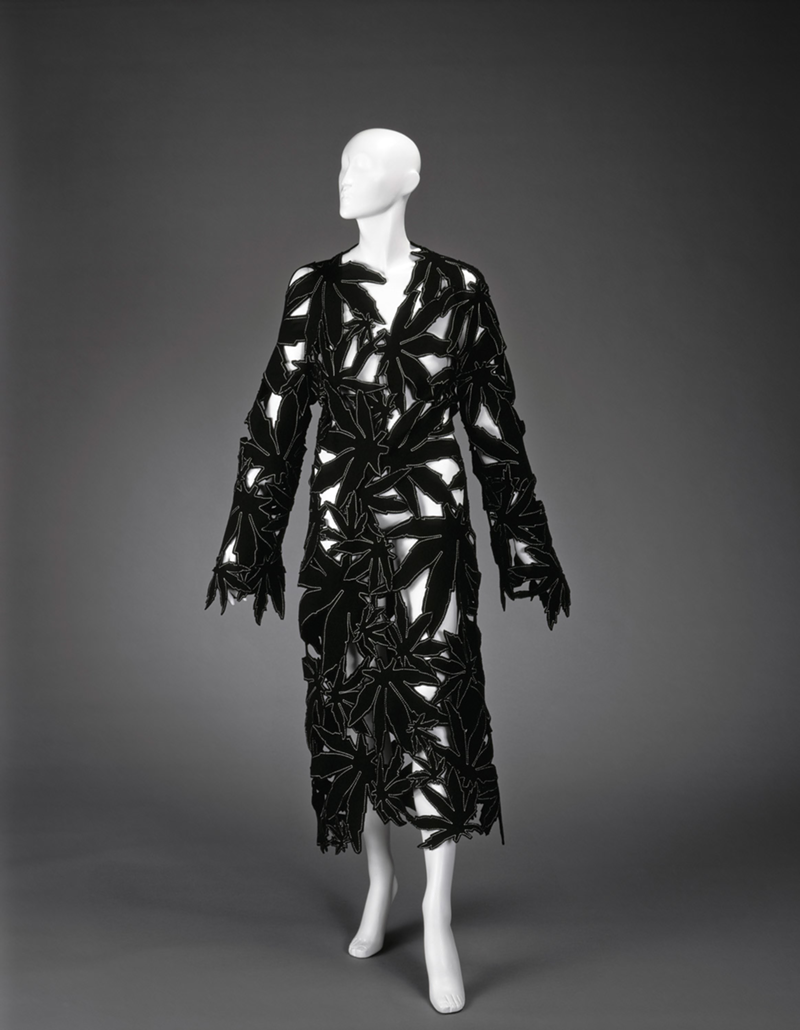Looking back at Cincinnati visual arts in 2013, I found these 10 exhibits, events and occurrences especially worth savoring as we enter 2014:
Charles Woodman’s Lateral Thinking, Rake’s End: On a Saturday night in October, electronic artist and DAAP professor Woodman presented his audio-visual improvisational ensemble Lateral Thinking at the Rake’s End art bar in Brighton. He and Loraine Wible projected images while three musicians played, and the performance had both a sense of Happenings history (a term for a multi-disciplinary performance art event coined in the 1950s), and an exciting newness to it. It served as a preview for Woodman’s upcoming Passages show, opening March 28, 2014 at Weston Gallery.
Cannabis Smoking Coat, Cincinnati Art Museum: I found the star of the museum’s What’s New: Fashion and Contemporary Craft show to be the handsome, humorous felt-wool Cannabis Smoking Coat by Cincinnati native and New York-based award-winning fashion designer John Bartlett. When created in 2000, it was pretty outré. But the way things are going with marijuana legalization, it’s probably just a few years before the museum can sell reproductions in its gift shop without irony. The show is up through Jan. 19, 2014.
Elena Dorfman’s Empire Falling, Phyllis Weston Gallery: The Los Angeles photographer spent two years on Empire Falling, her project “documenting” the hidden quarries of Ohio, Indiana and Kentucky. The 10 digital color prints she presented here last spring were spectacular. I put
“documenting” in quotes because the amount of layering of smaller images it took to create these larger subtly textured prints essentially created a kind of alternate American landscape of quarries.
Jay Bolotin’s Kharmen, Weston Gallery: Kharmen, the 22-minute film this great Cincinnati artist made by digitally animating his graphite drawings, pushed the definition of the group show Seeing Opera, which was supposed to consist of visual art inspired by specific operas. Bolotin’s film did have some relationship to Carmen, but primarily it was inspired by his own characters and his own individualistic vision. One waits eagerly for his next project.
Joe Girandola’s Rise and Fall: Monumental Duct Tape Drawings, UC’s DAAP Galleries: Strange and impressive, this show at UC’s DAAP Galleries introduced the work of Girandola — the new director of the MFA program in fine arts — to the public. Using multi-colored duct tape, he created large-scale renderings of world treasures like the Taj Mahal.
John Ruthven mural, “Martha, the Last Passenger Pigeon,” downtown: The accomplished Cincinnati wildlife painter, at age 86, climbed the scaffolding outside a building at 15 E. Eighth St., to supervise the ArtWorks crew turning his painting of Martha into a mural. This year — 2014 — marks the centenary of Martha’s death at the Cincinnati Zoo, and the Smithsonian Institution and others appear ready to turn the event into a landmark symbol of the need for environmentalism. Ruthven was way ahead of the curve — he convinced the zoo to create a memorial in 1974. This new mural is as much a tribute to him as it is to Martha.
Local Exposures: Cincinnati Daguerreotypes, Taft Museum of Art: This show of 10, 19th-century daguerreotypes with local connections was organized by assistant curator Tamera Muente as an adjunct to a larger show from Kansas City’s Nelson-Atkins Museum. But its photographs — especially J.P. Ball’s 1849 (app.) “Myers & Co. Confectioners” — left a lasting impression. And Ball, an early African-American photographer, is one of Cincinnati’s greats.
Patti Smith’s The Coral Sea, Contemporary Arts Center: Smith’s lovely, quiet exhibit wasn’t Pop-star self-centered in any way. It was, rather, a heartfelt and poetic examination of death — her way of bearing witness and paying tribute to loved ones gone.
Rebecca Carpenter’s “Aesculapean Family,” semantics: The Basic Needs show at the Brighton co-op, consisting of artists with a recent or current DAAP connection, pushed the envelope on materials and content and in doing so highlighted the importance of taking risks to achieve breakthroughs. Carpenter’s “Aesculapean Family,” for instance, consisted of milk inside intravenous bags. It wasn’t planned — I don’t think — for the milk to go sour, but it added to the disorienting yet haunting nature of the piece.
Ron Thomas’ Take It From Me, The Carnegie Galleries: For his first show at The Carnegie as its exhibitions director, Matt Distel — working with others — curated a retrospective of a relatively (and undeservedly) unknown Cincinnati Modernist, the late Ron Thomas. Take It From Me revealed Thomas to be a superb colorist with a precise mastery of line and geometric shapes. But also there was something more to his work, a spiritual quest. The show is up through Feb. 14, 2014.
CONTACT STEVEN ROSEN: [email protected]


